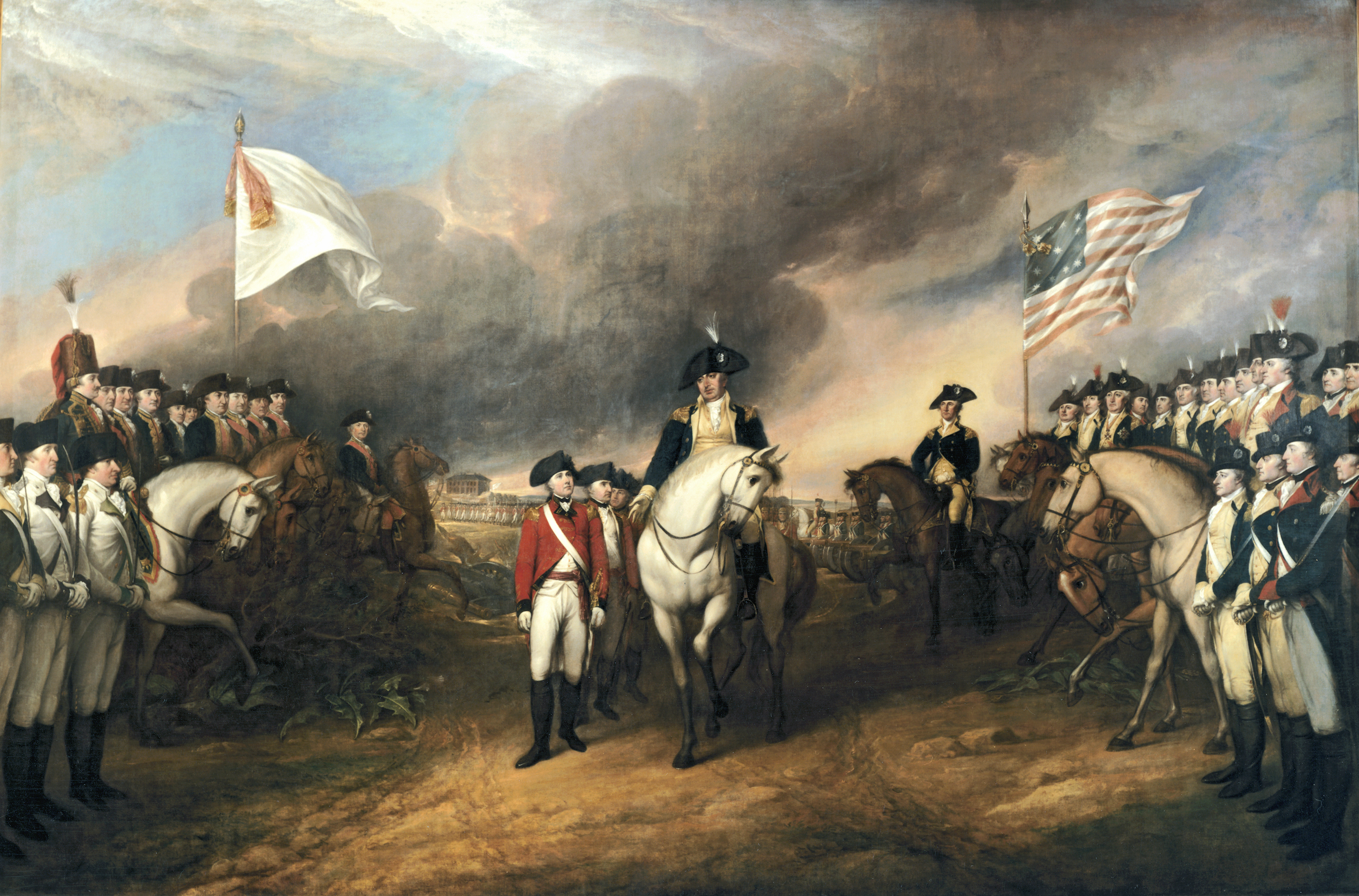Part 3: An Upside-down World The firing of the heavy guns continued into the night and into the next day. The Americans trained their guns on a house in which they thought Cornwallis had put his headquarters. The French guns fired on British ships; one direct hit caused a British ships to list into two others, both of which caught on fire as well. On October 11, the Americans dug a second trench, 400 yards closer to the British lines. The eventual target was the redoubts; taking those would enable the allied forces to concentrate on the main British defenses, rather than having to divert fire to the outer fortifications. And on the night of October 14, the French and Americans seized those redoubts. One of the redoubts was manned by the British fusiliers, troops who fought with a special musket called a fusil. The other two redoubts were manned by normal British troops and called Redoubt 9 and Redoubt 10. Washington’s planned called for an initial attack on the fusiliers’ redoubt that was really a diversion, diverting the British soldiers’ attention away from the other two redoubts, which were more heavily fortified. French forces then went after Redoubt 9 and American forces led by Alexander Hamilton charged Redoubt 10. The result was capture of all redoubts. Taking advantage of the situation, Washington ordered heavy guns dragged into the redoubts, and Cornwallis and his men faced the possibility of bombardment from all sides. Cornwallis then ordered a daring nighttime expedition that succeeded into spiking (or disabling) several allied cannons. American soldiers quickly repaired the cannons the next morning, and the bombardment on October 16 was particularly heavy. Cornwallis had been hoping for reinforcements from New York to arrive on ships. The French blockade prevented that. Cornwallis tried a desperate breakout, trying to slip across the York River, but was rebuffed. One boat of soldiers made it across the river, but a sudden squall prevented further evacuations and the British were stuck. What the Americans and the French on the front line saw on the morning of October 17 were a drummer and an officer waving a white handkerchief, the universal equivalent of, “Don’t shoot, we come in peace.” The officer had to endure a blindfold but was then taking behind the French-American line to proceed with peace negotiations.
Surrendering were nearly 8,000 British and Hessian troops. They also handed over thousands of guns and artillery pieces, wagons and horses, and even a couple of dozen transport ships. One person who was not in attendance for any of this was Cornwallis, who said he was ill. Instead, Brigadier General Charles O’Hara oversaw the proceedings for the defeated army, including the ceremonial transfer of the sword of surrender. When offered the sword by O’Hara, Rochambeau refused, saying that Washington was the proper recipient. In the end, the death toll on both sides was not devastating. British records list 156 killed, 326 wounded, and 70 missing. French records list 60 dead and 194 wounded. American records list 28 dead and 107 wounded. Five days after the surrender, the British reinforcements arrived. They returned to New York. Washington went to Philadelphia, to rest and recover. This was also the city that housed Congress. Washington then went with his army to New Windsor, N.Y., while diplomats negotiated the treaty that ended the war. All parties signed the Treaty of Paris on September 3, 1783. |
|
Social Studies for Kids
copyright 2002–2025
David White

 The result was a set of Articles of Capitulation, signed by all parties. Stung by harsh British treatment of the defeated at the recent Battle of Charleston, Washington refused to allow the defeated British army to leave with flags waving and bayonets fixed. Instead, the British soldiers marched out of Yorktown with their muskets on their shoulders and their flags furled. The practice was also supposed to call for the defeated army to play a marching tune from the country of the victor. Instead, Washington ordered the British drummers and fifers to play a British or German march. (The British forces were augmented with a large contingent of Hessian mercenaries.) The tune the musicians chose to play was “The World Turn’d Upside Down,” which was a popular British marching tune and which happened to have a title that many of the victors found fitting, given the circumstances of a former colony’s defeat of the one of the world’s great powers.
The result was a set of Articles of Capitulation, signed by all parties. Stung by harsh British treatment of the defeated at the recent Battle of Charleston, Washington refused to allow the defeated British army to leave with flags waving and bayonets fixed. Instead, the British soldiers marched out of Yorktown with their muskets on their shoulders and their flags furled. The practice was also supposed to call for the defeated army to play a marching tune from the country of the victor. Instead, Washington ordered the British drummers and fifers to play a British or German march. (The British forces were augmented with a large contingent of Hessian mercenaries.) The tune the musicians chose to play was “The World Turn’d Upside Down,” which was a popular British marching tune and which happened to have a title that many of the victors found fitting, given the circumstances of a former colony’s defeat of the one of the world’s great powers.
